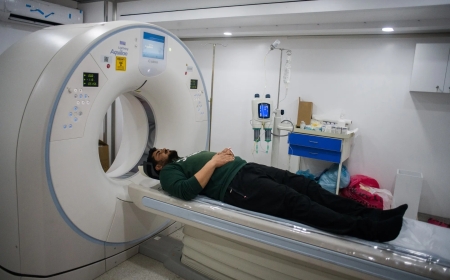Oxygen Delivery Devices for Home Use: Masks vs Nasal Cannulas
Explore the key differences between oxygen masks and nasal cannulas for home care. Find out which device suits your needs for safe, comfortable oxygen therapy.

When it comes to managing oxygen therapy at home, choosing the right device is crucial for safety, comfort, and effectiveness. Two of the most common oxygen delivery systems are oxygen masks and nasal cannulas. Understanding the differences between these options can help individuals and caregivers make informed decisions tailored to specific health needs. This guide explores the pros and cons of each device, factors to consider when selecting the right option, and the essential accessories that complement oxygen therapy.
Introduction to Home Oxygen Therapy
Oxygen therapy is a vital treatment for individuals with respiratory conditions such as COPD, pulmonary fibrosis, or other lung diseases. It involves supplying supplemental oxygen to maintain optimal blood oxygen levels. This process can significantly improve quality of life, reduce symptoms, and support overall health.
In a home setting, oxygen delivery devices need to be practical, safe, and comfortable. The most commonly used devices include oxygen masks and nasal cannulas, each designed to deliver oxygen effectively in different situations.
Understanding Oxygen Masks and Nasal Cannulas
Before diving into their advantages and disadvantages, it's essential to recognize what these devices are and how they function.
What is an Oxygen Mask?
An oxygen mask covers the nose and mouth, delivering oxygen directly into the respiratory system. These masks are usually secured with adjustable straps and can be made from various materials, including plastic and silicone. They are often used in situations requiring higher oxygen concentrations or when mouth breathing is necessary.
What is a Nasal Cannula?
A nasal cannula consists of two small prongs that fit into the nostrils, connected to a thin tube that runs over the ears and around the neck. It is one of the most commonly used devices for oxygen therapy at home because of its simplicity and comfort.
Key Differences Between Oxygen Masks and Nasal Cannulas
Factors to Consider When Choosing the Right Device
Selecting the appropriate oxygen delivery device depends on several factors, including the patients medical condition, comfort, lifestyle, and specific oxygen requirements.
Medical Needs and Oxygen Requirements
Patients needing higher oxygen concentrations may benefit more from an oxygen mask, especially during acute episodes. Conversely, for long-term therapy with lower oxygen needs, nasal cannulas are usually sufficient and more comfortable.
Comfort and Ease of Use
For continuous use, comfort is essential. Nasal cannulas are favored for their lightweight design and minimal interference with daily activities. Masks might be preferable during sleep or when higher oxygen levels are necessary.
Mobility and Lifestyle
Active individuals find nasal cannulas more compatible with movement and daily activities. Oxygen masks may restrict activity slightly but are effective during rest or sleep.
Safety and Maintenance
Both devices require proper cleaning and maintenance. Accessories like oxygen concentrator filters facilitate clean and safe oxygen delivery, minimizing infection risk.
Benefits and Limitations of Oxygen Masks and Nasal Cannulas
Benefits of Oxygen Masks
- Capable of delivering higher oxygen concentrations
- Suitable for severe respiratory conditions
- Useful during acute episodes or hospital-like settings
Limitations of Oxygen Masks
- Less comfortable, may cause skin irritation
- Can feel claustrophobic or hot
- Not ideal for prolonged daily use
Benefits of Nasal Cannulas
- Highly comfortable and lightweight
- Easy to use and adjust
- Less obtrusive, suitable for long-term use
Limitations of Nasal Cannulas
- Limited oxygen concentration (up to about 50%)
- Can cause nasal dryness or irritation
- Not suitable for patients requiring high oxygen levels
Associated Equipment and Accessories
To optimize oxygen therapy at home, various accessories and equipment support the proper functioning of oxygen delivery devices.
Oxygen Concentrator Filters
These filters are crucial in maintaining the purity of the oxygen supplied by concentrators, preventing dust and contaminants. An oxygen concentrator filter prolongs the equipment's lifespan and ensures safe delivery.
Oxygen Tanks and Cylinders
For portability and backup, oxygen tanks and cylinders are often used. They come with carts like oxygen tank carts or oxygen cylinder carts, making transport easy. These carts help organize and move heavy tanks conveniently.
Oxygen Carts and Transportation
Oxygen cart options include dedicated oxygen tank carts or oxygen cylinder carts, designed to ensure mobility and safe handling of oxygen tanks within the home or on the go.
Making the Right Choice for Home Use
Every individuals needs are different, and consulting with a healthcare provider is the best way to determine which device is appropriate. For those with mild to moderate oxygen needs and active lifestyles, nasal cannulas are typically recommended. Patients requiring higher oxygen levels during sleep or specific medical conditions may prefer oxygen masks.
Its also essential to evaluate the ease of use, comfort, and compatibility with other equipment like oxygen concentrator filters and portable oxygen tanks.
Conclusion
Choosing between an oxygen mask and a nasal cannula depends largely on a persons medical condition, comfort preferences, and daily activity levels. Both devices play critical roles in managing oxygen therapy efficiently at home. Access to quality accessories such as oxygen concentrator filters and appropriate carts makes the process safer and more convenient.
For reliable medical supplies and comprehensive options,All Care Storeis the best online destination in the USA. They offer a wide range of products designed to enhance your comfort, safety, and independenceshop now with free fast shipping on all orders.


































